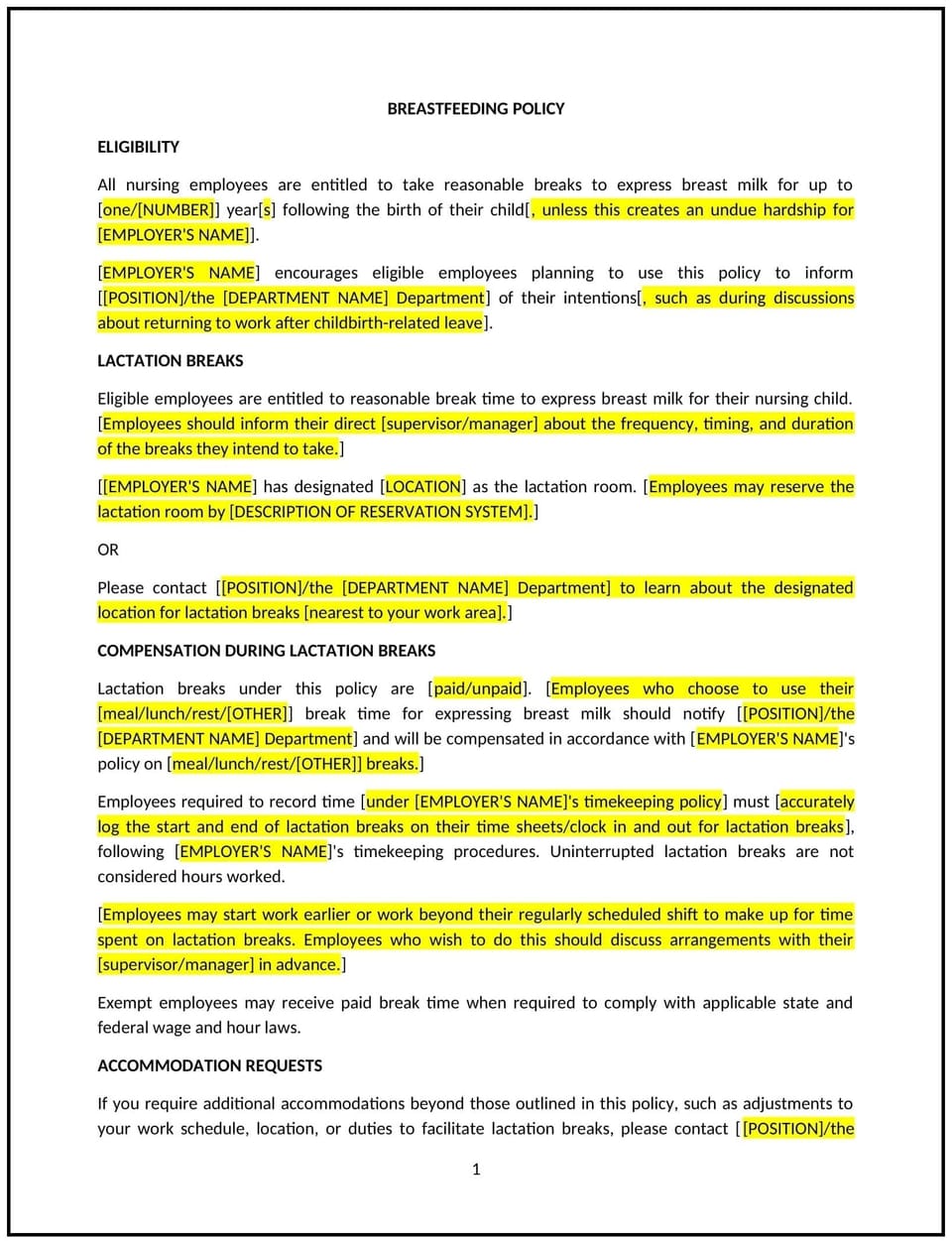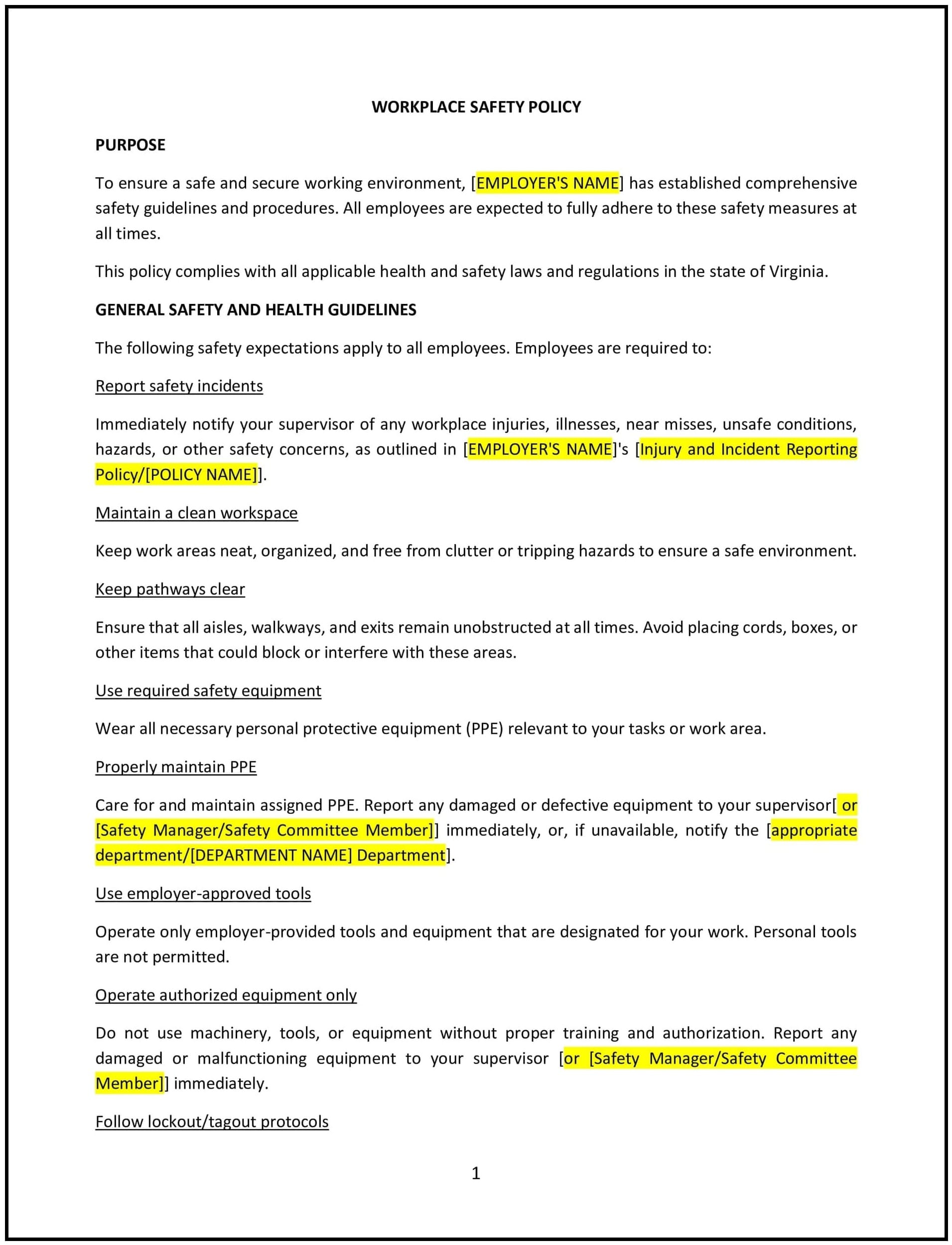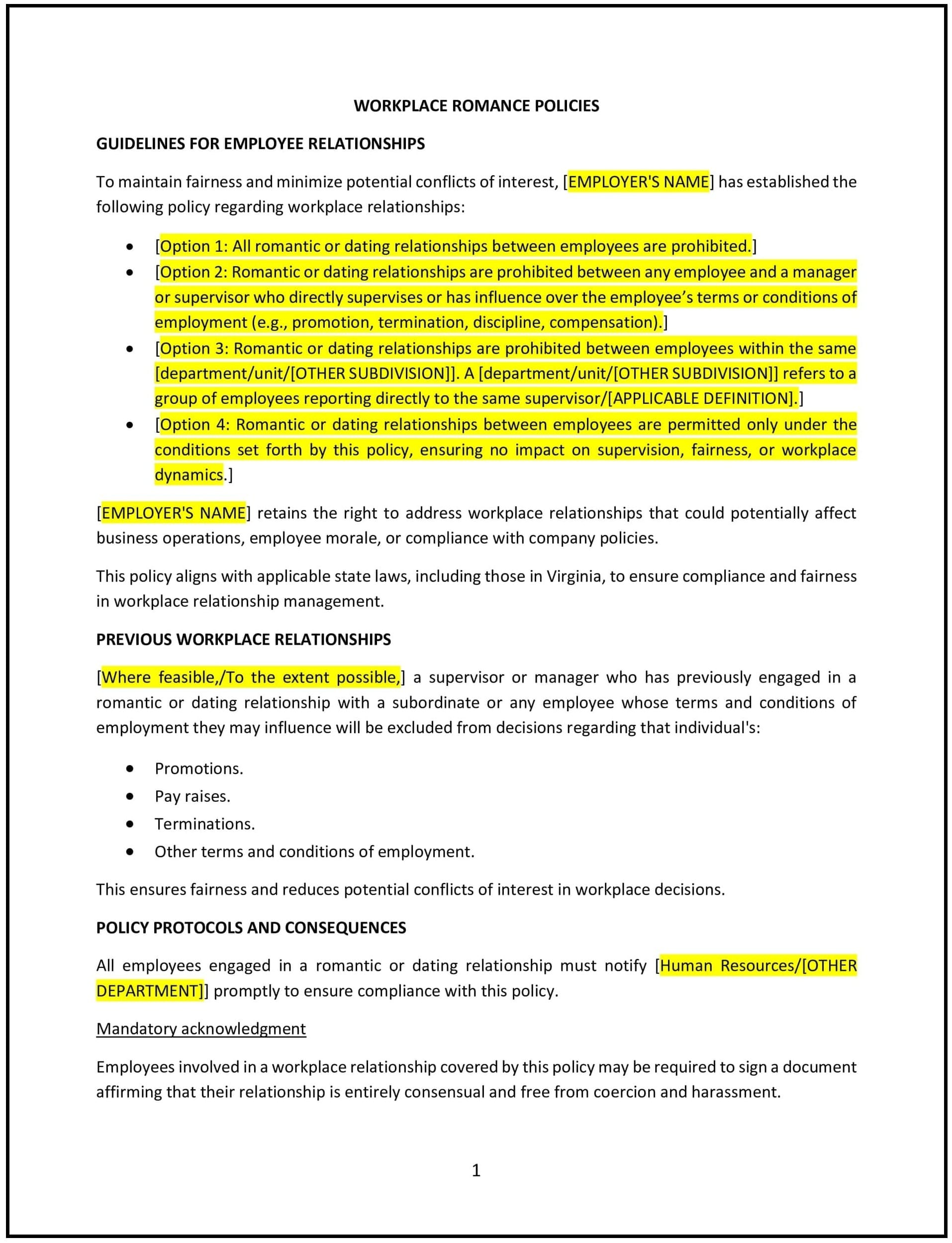Breastfeeding break policy (South Carolina): Free template

Breastfeeding break policy (South Carolina)
This breastfeeding break policy is designed to help South Carolina businesses establish guidelines for supporting nursing employees who need breaks to express breast milk. It outlines procedures for providing reasonable break times and private spaces, ensuring compliance with federal and state laws.
By adopting this policy, businesses can support nursing employees, promote work-life balance, and align with general best practices for employee well-being.
How to use this breastfeeding break policy (South Carolina)
- Define eligibility: Specify which employees are eligible for breastfeeding breaks, such as nursing mothers for up to one year after childbirth.
- Establish break procedures: Provide guidelines for the frequency and duration of breaks, typically aligned with federal requirements.
- Address private spaces: Outline the requirements for providing a private, clean, and functional space for expressing breast milk.
- Ensure job protection: Guarantee that employees will not face discrimination or retaliation for taking breastfeeding breaks.
- Train managers: Educate supervisors on handling breastfeeding break requests and maintaining workflow during employee absences.
- Review and update: Assess the policy annually to ensure it aligns with evolving legal standards and employee needs.
Benefits of using this breastfeeding break policy (South Carolina)
This policy offers several advantages for South Carolina businesses:
- Supports nursing employees: Demonstrates a commitment to helping employees balance work and personal responsibilities.
- Enhances employee satisfaction: Shows employees that the business values their well-being and supports their needs.
- Aligns with legal standards: Ensures compliance with federal laws, such as the Fair Labor Standards Act (FLSA), and state regulations.
- Boosts retention: Encourages nursing employees to return to work and remain with the business.
- Promotes inclusivity: Fosters a supportive and inclusive workplace culture.
Tips for using this breastfeeding break policy (South Carolina)
- Communicate the policy: Share the policy with employees and include it in the employee handbook.
- Provide training: Educate managers on handling breastfeeding break requests and maintaining workflow during employee absences.
- Monitor compliance: Regularly review break requests and space availability to ensure adherence to the policy.
- Address issues promptly: Take corrective action if requests are mishandled or employees face discrimination.
- Update regularly: Review the policy annually to ensure it aligns with evolving legal standards and employee needs.
Q: How does this policy benefit businesses?
A: It supports nursing employees, enhances employee satisfaction, and aligns with legal standards for breastfeeding breaks.
Q: Who is eligible for breastfeeding breaks?
A: Nursing mothers are typically eligible for breaks for up to one year after childbirth, as required by federal law.
Q: What facilities must businesses provide for breastfeeding employees?
A: Businesses must provide a private, clean, and functional space (not a bathroom) for expressing breast milk.
Q: Are breastfeeding breaks paid?
A: Under federal law, breastfeeding breaks may be unpaid unless the employee uses existing paid break times.
Q: How often should businesses review this policy?
A: Businesses should review the policy annually or as needed to ensure it aligns with evolving legal standards and employee needs.
This article contains general legal information and does not contain legal advice. Cobrief is not a law firm or a substitute for an attorney or law firm. The law is complex and changes often. For legal advice, please ask a lawyer.


